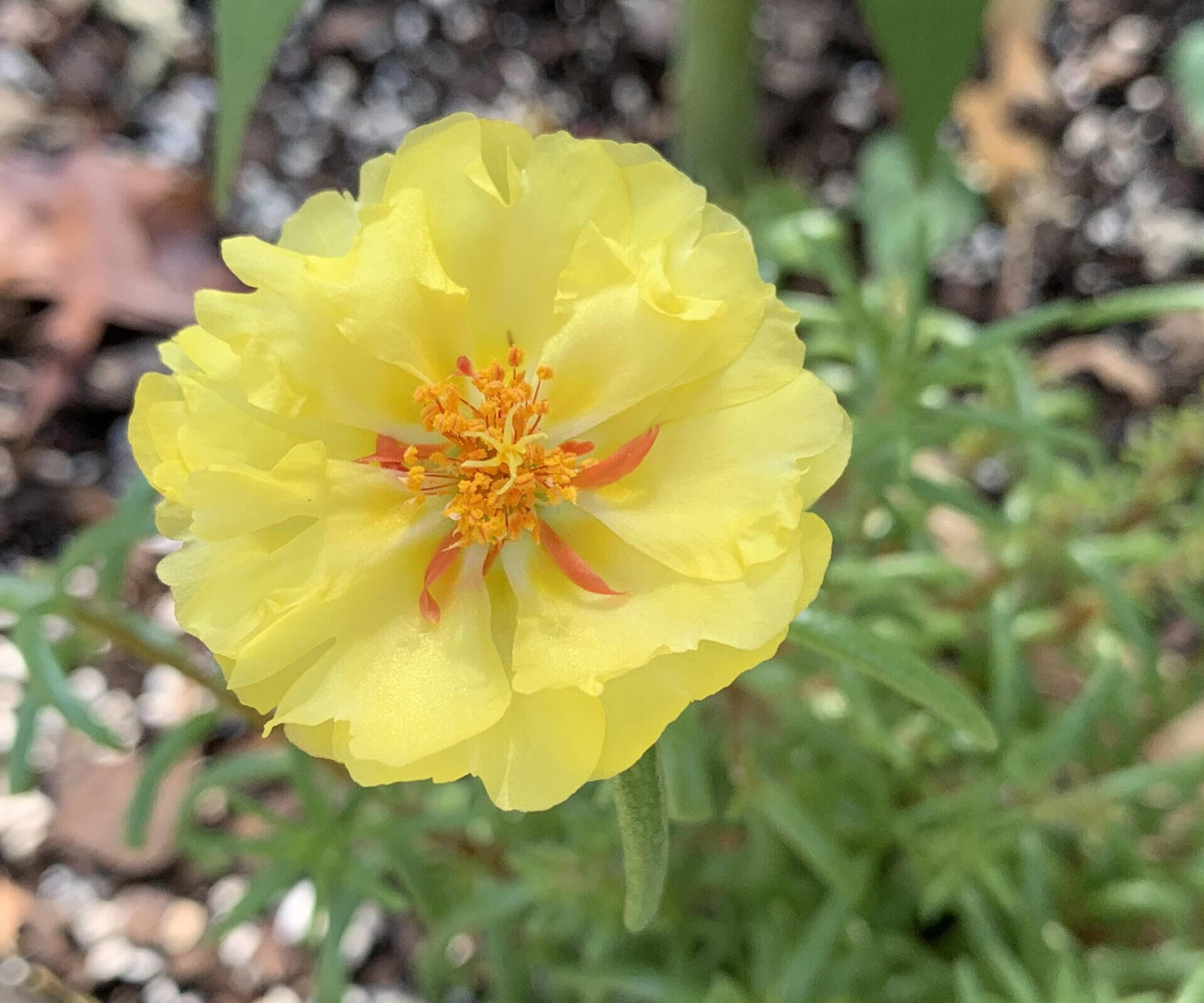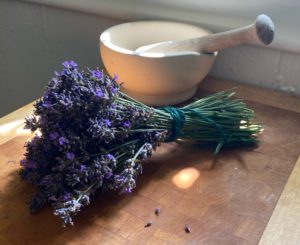Portulaca (Portulaca grandiflora), also known as moss rose, is a beautiful, flowering succulent native to South America. The leaves are narrow and somewhat pointed, and they resemble a succulent version of rosemary leaves. The annual boasts single or double blooms that vary in color depending on the variety. The ruffled flowers look like miniature roses, hence the name moss rose, and measure from 1 to 1.5 inches (2.5 to 3.8 cm) in diameter. The delicate blooms close at night and on overcast days. On sunny days, however, they are a favorite of bees, butterflies, and other pollinators.
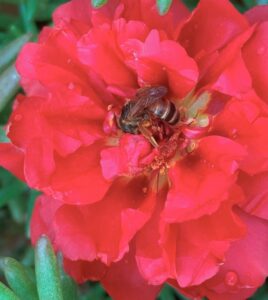
The plant’s reddish-green stems grow to a height of 3 to 6 inches (7.6 to 15 cm) and 12 to 14 inches (30 to 36 cm) wide. It spreads relatively quickly, making it a great option for ground cover and rock gardens. It also grows well in containers and hanging baskets.
This article contains affiliate links. If you make a purchase using one of these links, I will receive a very small commission at no additional cost to you, and it will help me maintain this website. Rest assured, I only recommend products I actually like!
How to Plant Portulaca
Most people grow portulaca from young plants purchased from a big box store or local nursery. But portulaca can also be grown from seed purchased online.
The seeds are very small, so you may want to start them indoors. Six to eight weeks before the last expected frost in the spring, sprinkle the seeds on top of a good potting mix. Do not cover them with soil as they need light to germinate. Use a grow light and heat mat to increase germination time and rates. Mist them daily but do not allow the soil to get soggy. Sprouts will appear in about 7 to 14 days. Once the weather has warmed to 70 F (21 C), you can transplant them outdoors, spacing them about 8 to 12 inches (20 to 30 cm) apart. Be patient, though, because it will take about eight to ten weeks for them to flower, but it will be worth the wait!
You can also sow seeds directly in beds, containers, rock gardens, etc. Just make sure the threat of frost has passed.
Sun and Soil
Portulacas require six to eight hours of full sun to bloom well. The more sun it receives, the more it will bloom. As for soil, they are not too fussy as long as it is well-draining.

Water and Fertilizer
Once established, this succulent does not require a lot of water. Water when the top inch or two (2.5 to 5 cm) of soil is dry to the touch. Plants in containers may require watering more often than those growing in the ground. It is important not to overwater, as it will diminish the number of flowers, and the roots may develop root rot.
Portulacas are not heavy feeders and do not require much fertilizer. However, applying a fertilizer that is higher in phosphorus (the middle number in the NPK) a few times during the growing season will give it an extra boost and more robust blooms. This is the one I use.
How to Propagate Portulaca From Cuttings
Moss rose cuttings are easy to propagate. Cut a 4 to 6 inch (10 to 15 cm) stem that includes one or more nodes. (A node is a place on the stem where buds, leaves or branches originate.) Place the stem 2 to 3 inches (5 to 8 cm) deep in a container filled with moistened, well-draining potting mix. Set the container in bright but indirect light. Water as needed by misting the soil, but do not overwater or make the soil soggy, which might attract fungus gnats. The cutting should root in about one to two weeks. Once new growth has appeared, transplant outdoors in a sunny location.
Harvesting Seeds or Reseeding
The flowers will develop a small seed capsule after they are pollinated. The capsule will split open when it is ripe, exposing the very small blue to gray seeds, which are edible. You can harvest the seeds if you like or allow them to fall to the ground and reseed the area.
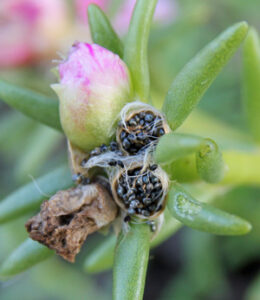
Winter
Moss roses are sensitive to frost and will die, usually at this first sign of winter. Even though it is an annual, the plant will more than likely come back the following spring if it has been allowed to reseed.
Pests and Diseases
Thankfully, moss roses do not have a lot of pest problems. They may attract sap-sucking aphids, which often hide on the underside of the leaves. However, this insect is easily treated organically. You can learn more about aphids and how to both identify and treat them in this helpful article.
Mealybugs are small, cottony-looking insects that also suck the sap out of plants. They too, are easy to treat organically. You can learn more about them here. Also, learn how to distinguish them from the similar looking but beneficial mealybug destroyer larvae in this article.
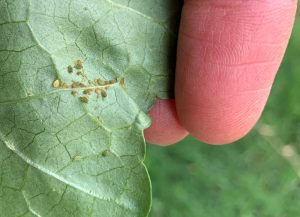
Slugs may also attack portulacas. They can be found feeding in the early morning hours, at which time, you can handpick them off and drop them in a container of soapy water.
Diseases to look out for are powdery mildew, which coats the upper side of the plant with a white powder-like fungus. Follow the link to learn how to treat it organically.
Varieties
Here are some of the varieties you might want to consider growing:
Afternoon Delight displays a 2 inch (5 cm) wide flower that stays open later in the afternoon than other varieties.
Calypso Mix is a double flower variety with yellow, orange, red, white, pink, and purple blooms.
Duet has single flowers that grow on compact plants. They are yellow and red or yellow and pink.
Fairy Tale Series have a pom-pom in the middle of the flower with flat outer petals. The series includes cultivars with names like “Cinderella,” “Snow White,” and “Sleeping Beauty,” which are yellow and red, all white, and all yellow, respectively.

Caution with Pets
One final note, if you have pets that like to eat plants, you may want to reconsider planting portulaca within their reach. Due to their soluble calcium oxalate content, they can be toxic to dogs and cats. If consumed, it could lead to a metabolic imbalance and kidney failure.
Thank you for reading this article! If you found it helpful, please consider sharing it with others via email and social media!
